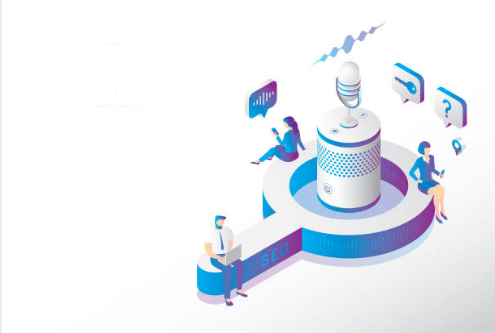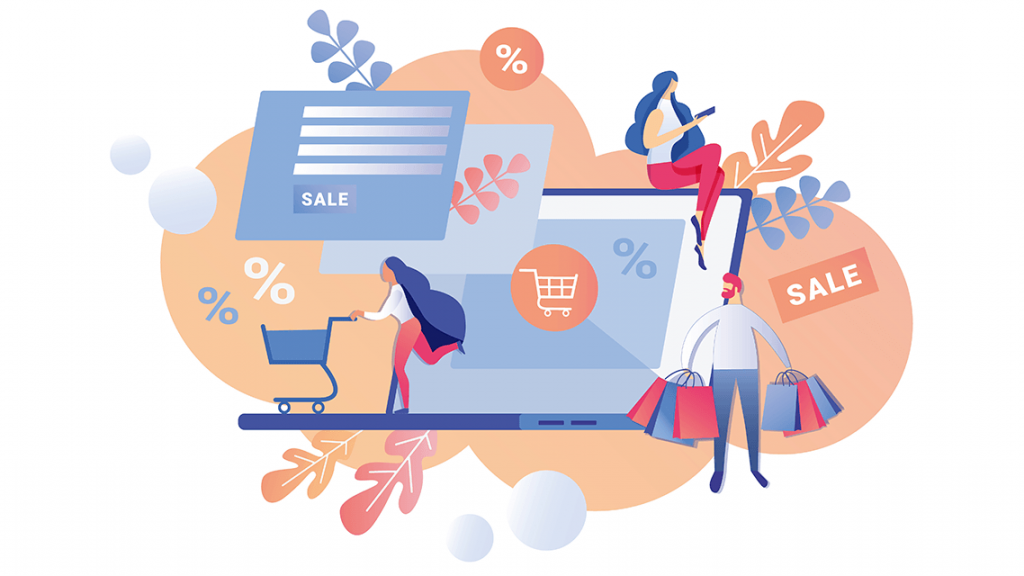2020, a turbulent year for both people and businesses.
While many organizations have faced significant setbacks in terms of the bottom line, they’re slowly managing to get back up on their feet.
Since the COVID-19 rhetoric has rendered traditional B2B stores as more or less obsolete, we cannot say the same for B2B eCommerce stores.
As physical trade activities wane amidst the pandemic, B2B business owners embrace the potential of eCommerce as a global trade goliath. As 2020 enters its third quarter, we’ve witnessed a rise in online B2B trade activities.
If you’re a B2B owner looking to get in-tune with the latest eCommerce practices, then this article is for you. Keep on reading to find out about six of the most common B2B eCommerce trends to look out for in the next quarters of 2020.
1. Personalization of Customer Experiences

A personalized B2B user-experience holds precedence over everything else.
Sapio wasn’t wrong in predicting that personalization is the number one concern for most businesses. Concepts like a predictive ordering process, and AI-powered purchasing play a vital role in improving the customer experience.
As B2B eCommerce rises in popularity, the demand is likely to make these technologies a lot smarter in the coming years. Coming integrated with these will be browsing history, customer behavior metrics, demographics mapping, and more – ensuring a user-centric shopping experience like never before. Even as we speak, we see an upward shift towards customized catalogs and navigational experiences. Some stores have gone above and beyond the call of duty to tailor their entire website for specific purchasing parties.
The net benefit to personalization means improved conversion rates, higher avg: order values, and customer experiences.
To utilize personalization to the fullest possible extent, business owners need to connect all the data points to their ERP system to provide a more customized experience. The more your data points, the richer you can make the customer experience.
2. Voice Ecommerce and B2B

Taking a cue from its popularity in B2C eCommerce, the voice commerce phenomenon is gaining popularity with B2B. In 2019, we only saw a handful of B2B buyers wanting voice search functionalities for their buying experience. That number, however, is expected to rise this year as well as in the future.
The reason behind its predicted rise lies in the complexity of B2B purchases themselves. The complexities make voice commerce a much sought-after tool. While it is true that B2B investments involve a lot of pre-purchase foresight and analysis, voice commerce can prove to be a game-changer for businesses in making the repetitive aspects of B2B purchasing quicker and efficient.
Yes, this trend is in its infancy, but seeing the upwards shift towards voice commerce in B2C, it shouldn’t come as a surprise that it will penetrate B2B in the future.
3. The Rise of Niche Marketplaces

Sapio, in 2019 estimated that a total of only 6% of B2B buyers haven’t subscribed to an online marketplace. The rest of the buyers that have subscribed to an online marketplace know the benefits. With B2B on the rise, it is expected that more and more users will continue to move towards marketplaces.
Online marketplaces provide buyers with both benefits and disadvantages. For new sellers, it’s a haven of opportunity from where they can gain new buyers and build credibility for their brand. For the vets, however, the transaction fees are a serious hindrance that cuts into their bottom line. But while that is a disadvantage for established sellers, in the age of personalization and customer-focused experiences, online marketplaces should not be overlooked.
Perhaps the most interesting change in online marketplaces that we’ve in the last few years is the steady rise of niche marketplaces. While Amazon is the market leader in providing all sorts of products, it’s just too much work to search for the product.
Niche marketplaces, as the name suggests, offer specific products for specific users. Such marketplaces are tailored to meet the needs of such customers, but they also offer a simplified user journey. A major player in the niche marketplace are sites tailored for the healthcare industry. As the market moves towards personalization, the rise of niche marketplaces is a given.
4. Augmented and Virtual Reality (AR and VR) in B2B Ecommerce

AR and VR play a vital role in B2C purchases by providing an immersive experience of users. However, the complexities involved in B2B purchases make VR and AR less relevant in the industry.
Simplified solutions, that’s what B2B buyers want from their sellers. For their part, VR and AR can be applied to enhance the B2B customer experience by offering them an opportunity to view products in an in-depth manner. For example, buyers can view the specifications of a product model in VR from different directions as opposed to the traditionally viewing different images.
5. Ecommerce and Sustainability

This is perhaps the most important trend to look out for in the next quarter and the coming years. Many B2C businesses have gone environment-friendly. With the fallout of the COVID-19 pandemic, focusing on the environmental effects of trade activity is a must for every company out there.
For B2B purchases, reports on sustainable trade actions and environment-friendliness is important to target the modern demographic, a demographic generally concerned for the environment.
Companies will also have to report on their CO2 emissions and how they are optimizing their supply chains to be as fuel-efficient and sustainable as possible.
6. The Slow Rise of Progressive Web Apps (PWA’s)

PWA’s have been popular for a rather long time. While their rise has been minimal, to say the least, there are expectations of it to rise significantly amidst the pandemic.
PWA’s capture the whole spectrum of both mobile and desktop shopping experiences. From a single application, companies can target a wide range of customers without having to create multiple experiences of mobile and desktops.
An upward trend towards PWAs can already be felt. Pretty soon, eCommerce developers will start promoting their offerings with PWA’s. That said, there isn’t much we can say at the moment related to PWAs’ support for offline purchases. Regardless, the upwards trend towards PWA’s carries with its significant potential for growth in the future.
Conclusion
Since everything is going digital, it’s time for companies to embrace the change as quickly as possible. In these trying times, companies are coming up with innovative ways to face operational challenges.
At the same time, seeing the potential benefits, many entrepreneurs and traditional business owners have now started to shift towards eCommerce for B2B. At the same time, many platform providers have also ramped up their efforts in providing B2B specific platforms. One such platform is B2BWoo (WooCommerce B2B), a powerful B2B platform built on top of the WooCommerce platform. From custom catalogs to dynamic pricing, it has everything you need to make your B2B store stand out from the crowd.
